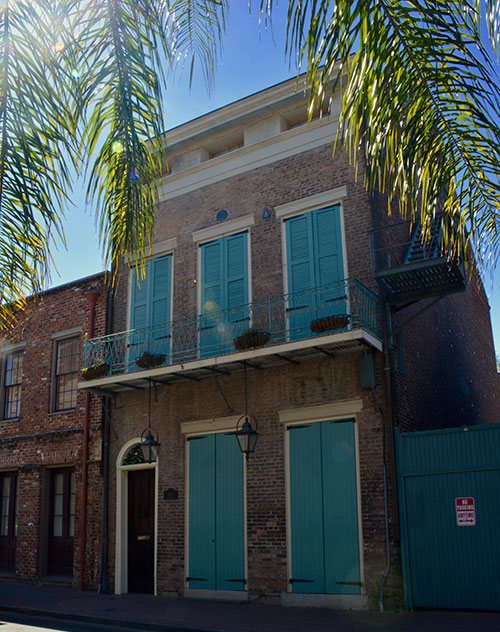How Do Operable Louvers Work?
Published: May 05, 2020
Operable Louvers began to appear in doors and shutters in the middle of the 19th century. They would have been an important part of how a family regulated air flow for their home and controlled how much sunlight shone inside too. Louvers were not for show! They had an important job to do. If you opt to purchase operable louvers for your door or shutter, then you are buying a little piece of working history, and you'll want to know just how they work.
A person could justifiably say that is patently obvious how working louvers do their thing. Traditionally, there is a rod mounted at the very center of the bank of louvers, running perpendicular to the shutters themselves, that connect to and control each shutter all at once. Called the tilt rod, moving this up or down adjusts all the louvers at once, and that's it. The basics are pretty simple, we're not talking about jet engines here. Like a lot of woodwork, it is basically a simple thing. This is the important part, it is a simple thing made with skill and care so that it lasts a very, very long time and looks good doing it.

One of the most important aspects of operable louvers is something you can not see at all. Each louver is mounted with a pin into the vertical structural part of the door or shutter, called the stile. That mounting is very important because it must be tight enough so that the louver stays in place when you want it to, but loose enough so you can move the louver. There is an invisible balance between that tightness and looseness in a louver's mounting that is called tension. A well made shutter or door with louvers that work is said to hold its tension well. Being a moving part, wear and tear can cause problems very quickly if shoddy work is done. Like a good scary movie, you want the tension to last! Ours does, so your louvers will keep working correctly for years.
One little historical touch that you can and should opt for is a little something called the mouse hole. Don't worry, rodents are not actually involved here. This is a small hole in the rail, the horizontal structural piece of your shutter or door, aligned with the Tilt Rod just right, so that when the rod is extended fully it fits right into the Mouse Hole. The whole concept here is to give the rod a place to go so that it is not contacting and scratching your rail. Plus, if the temptation ever gets too great, and someone decides to start tugging on the tilt rod to see how far they can get it to go (and here I have someone of a youthful disposition in mind), the mouse hole will catch and hold the rod before it can extend too far and do damage.
One thing I should mention is that the tilt rod itself is traditionally mounted in the center of the bank of louvers. There have been some styles out there that called for the rod to be mounted more to the left or right, for a different look. While that is certainly an option, the best place for the tilt rod is really the center. If you mount it off-center, then the pressure you apply on the rod to move the louvers will not be evenly spread out among them. Over time, that imbalance of force will mean one part of the louver is stressed more than the other, and that means a worn out, broken louver. So let us put that tilt rod in the center where it belongs, so that the force you apply to move the lovers is distributed evenly. That will lengthen the lifespan of your louvers, improve the authenticity of your shutters.
So, you see, operable louvers are not really all that complicated. There are a few things to keep in mind about them, but not much really. Honestly, using a phone is more complicated that using an operable shutter. Now that you know some of the details about them, you will not just be a person that owns some fancy woodwork. You will have woodwork that works, so you ain't no Louver, you're a Winner! Get it?
Build your new Custom and get a Free Instant Quote Today
Our state of the art designers allow you to design and build completely customized to fit your exact needs.
Questions or concerns contact us here or via 412.641.0177 .
Build an Instant QuoteNeed Help?
Contact Us @ 412.641.0177
Recently Published
Rustic Radiance: Arched Wooden Doors In Country Living
Published: April 22, 2024
Enchanting Portals: Arched Wooden Doors That Welcome
Published: April 16, 2024
Sleek Solutions: Sliding Barn Doors For Your Home Office
Published: April 11, 2024
Simplicity Defined: Contemporary Wooden Flat Panel Doors
Published: April 02, 2024
Elegant Alfresco: AZEK Cabinet Doors Transform Outdoor Kitchens
Published: March 25, 2024
Craftsmanship In Every Detail: Elevating Your Pantry With Wooden Louvered Doors
Published: March 18, 2024
Country Elegance: Cherry Cabinet Doors Bringing Warmth To Farmhouse DéCor
Published: March 11, 2024
Poolside Chic: Elevating Your Pool House With Louvered Wood Doors
Published: March 04, 2024
Seamless Transitions: Welcome The Outdoors With Wooden French Doors
Published: February 27, 2024
The Grand Entrance: Mahogany Doors As Statement Pieces In Interior Design
Published: February 19, 2024

